US Airways 2008 Annual Report Download - page 74
Download and view the complete annual report
Please find page 74 of the 2008 US Airways annual report below. You can navigate through the pages in the report by either clicking on the pages listed below, or by using the keyword search tool below to find specific information within the annual report.-
 1
1 -
 2
2 -
 3
3 -
 4
4 -
 5
5 -
 6
6 -
 7
7 -
 8
8 -
 9
9 -
 10
10 -
 11
11 -
 12
12 -
 13
13 -
 14
14 -
 15
15 -
 16
16 -
 17
17 -
 18
18 -
 19
19 -
 20
20 -
 21
21 -
 22
22 -
 23
23 -
 24
24 -
 25
25 -
 26
26 -
 27
27 -
 28
28 -
 29
29 -
 30
30 -
 31
31 -
 32
32 -
 33
33 -
 34
34 -
 35
35 -
 36
36 -
 37
37 -
 38
38 -
 39
39 -
 40
40 -
 41
41 -
 42
42 -
 43
43 -
 44
44 -
 45
45 -
 46
46 -
 47
47 -
 48
48 -
 49
49 -
 50
50 -
 51
51 -
 52
52 -
 53
53 -
 54
54 -
 55
55 -
 56
56 -
 57
57 -
 58
58 -
 59
59 -
 60
60 -
 61
61 -
 62
62 -
 63
63 -
 64
64 -
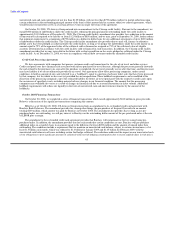 65
65 -
 66
66 -
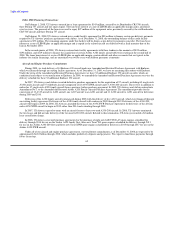 67
67 -
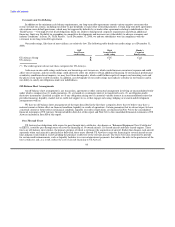 68
68 -
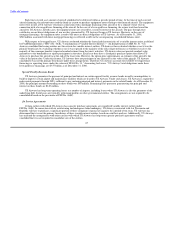 69
69 -
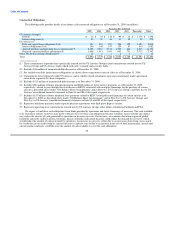 70
70 -
 71
71 -
 72
72 -
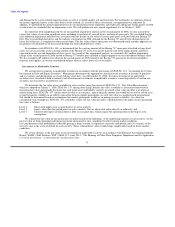 73
73 -
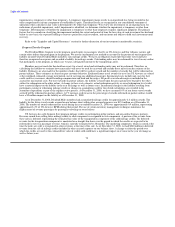 74
74 -
 75
75 -
 76
76 -
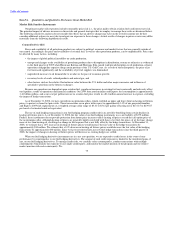 77
77 -
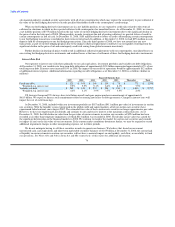 78
78 -
 79
79 -
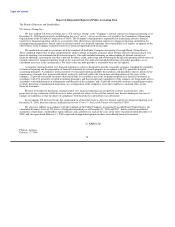 80
80 -
 81
81 -
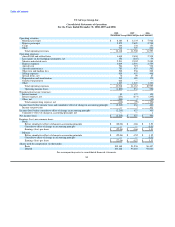 82
82 -
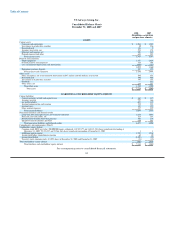 83
83 -
 84
84 -
 85
85 -
 86
86 -
 87
87 -
 88
88 -
 89
89 -
 90
90 -
 91
91 -
 92
92 -
 93
93 -
 94
94 -
 95
95 -
 96
96 -
 97
97 -
 98
98 -
 99
99 -
 100
100 -
 101
101 -
 102
102 -
 103
103 -
 104
104 -
 105
105 -
 106
106 -
 107
107 -
 108
108 -
 109
109 -
 110
110 -
 111
111 -
 112
112 -
 113
113 -
 114
114 -
 115
115 -
 116
116 -
 117
117 -
 118
118 -
 119
119 -
 120
120 -
 121
121 -
 122
122 -
 123
123 -
 124
124 -
 125
125 -
 126
126 -
 127
127 -
 128
128 -
 129
129 -
 130
130 -
 131
131 -
 132
132 -
 133
133 -
 134
134 -
 135
135 -
 136
136 -
 137
137 -
 138
138 -
 139
139 -
 140
140 -
 141
141 -
 142
142 -
 143
143 -
 144
144 -
 145
145 -
 146
146 -
 147
147 -
 148
148 -
 149
149 -
 150
150 -
 151
151 -
 152
152 -
 153
153 -
 154
154 -
 155
155 -
 156
156 -
 157
157 -
 158
158 -
 159
159 -
 160
160 -
 161
161 -
 162
162 -
 163
163 -
 164
164 -
 165
165 -
 166
166 -
 167
167 -
 168
168 -
 169
169 -
 170
170 -
 171
171 -
 172
172 -
 173
173 -
 174
174 -
 175
175 -
 176
176 -
 177
177 -
 178
178 -
 179
179 -
 180
180 -
 181
181 -
 182
182 -
 183
183 -
 184
184 -
 185
185 -
 186
186 -
 187
187 -
 188
188 -
 189
189 -
 190
190 -
 191
191 -
 192
192 -
 193
193 -
 194
194 -
 195
195 -
 196
196 -
 197
197 -
 198
198 -
 199
199 -
 200
200 -
 201
201 -
 202
202 -
 203
203 -
 204
204 -
 205
205 -
 206
206 -
 207
207 -
 208
208 -
 209
209 -
 210
210 -
 211
211 -
 212
212 -
 213
213 -
 214
214 -
 215
215 -
 216
216 -
 217
217 -
 218
218 -
 219
219 -
 220
220 -
 221
221 -
 222
222 -
 223
223 -
 224
224 -
 225
225 -
 226
226 -
 227
227 -
 228
228 -
 229
229 -
 230
230 -
 231
231 -
 232
232 -
 233
233 -
 234
234 -
 235
235 -
 236
236 -
 237
237 -
 238
238 -
 239
239 -
 240
240 -
 241
241 -
 242
242 -
 243
243 -
 244
244 -
 245
245 -
 246
246 -
 247
247 -
 248
248 -
 249
249 -
 250
250 -
 251
251 -
 252
252 -
 253
253 -
 254
254 -
 255
255 -
 256
256 -
 257
257 -
 258
258 -
 259
259 -
 260
260 -
 261
261 -
 262
262 -
 263
263 -
 264
264 -
 265
265 -
 266
266 -
 267
267 -
 268
268 -
 269
269 -
 270
270 -
 271
271 -
 272
272 -
 273
273 -
 274
274 -
 275
275 -
 276
276 -
 277
277 -
 278
278 -
 279
279 -
 280
280 -
 281
281 -
 282
282 -
 283
283 -
 284
284 -
 285
285 -
 286
286 -
 287
287 -
 288
288 -
 289
289 -
 290
290 -
 291
291 -
 292
292 -
 293
293 -
 294
294 -
 295
295 -
 296
296 -
 297
297 -
 298
298 -
 299
299 -
 300
300 -
 301
301 -
 302
302 -
 303
303 -
 304
304 -
 305
305 -
 306
306 -
 307
307 -
 308
308 -
 309
309 -
 310
310 -
 311
311 -
 312
312 -
 313
313 -
 314
314 -
 315
315 -
 316
316 -
 317
317 -
 318
318 -
 319
319 -
 320
320 -
 321
321 -
 322
322 -
 323
323 -
 324
324 -
 325
325 -
 326
326 -
 327
327 -
 328
328 -
 329
329 -
 330
330 -
 331
331 -
 332
332 -
 333
333 -
 334
334 -
 335
335 -
 336
336 -
 337
337 -
 338
338 -
 339
339 -
 340
340 -
 341
341 -
 342
342 -
 343
343 -
 344
344 -
 345
345 -
 346
346 -
 347
347 -
 348
348 -
 349
349 -
 350
350 -
 351
351 -
 352
352 -
 353
353 -
 354
354 -
 355
355 -
 356
356 -
 357
357 -
 358
358 -
 359
359 -
 360
360 -
 361
361 -
 362
362 -
 363
363 -
 364
364 -
 365
365 -
 366
366 -
 367
367 -
 368
368 -
 369
369 -
 370
370 -
 371
371 -
 372
372 -
 373
373 -
 374
374 -
 375
375 -
 376
376 -
 377
377 -
 378
378 -
 379
379 -
 380
380 -
 381
381 -
 382
382 -
 383
383 -
 384
384 -
 385
385 -
 386
386 -
 387
387 -
 388
388 -
 389
389 -
 390
390 -
 391
391 -
 392
392 -
 393
393 -
 394
394 -
 395
395 -
 396
396 -
 397
397 -
 398
398 -
 399
399 -
 400
400 -
 401
401
 |
 |

Table of Contents
impairment as temporary or other than temporary. A temporary impairment charge results in an unrealized loss being recorded in the
other comprehensive income component of stockholders' equity. Unrealized losses are recognized in our consolidated statement of
operations when a decline in fair value is determined to be other than temporary. We review our investments on an ongoing basis for
indications of possible impairment, and if impairment is identified, we determine whether the impairment is temporary or other than
temporary. Determination of whether the impairment is temporary or other than temporary requires significant judgment. The primary
factors that we consider in classifying the impairment include the extent and period of time the fair value of each investment has declined
below its cost basis, the expected holding or recovery period for each investment, and our intent and ability to hold each investment until
recovery.
Refer to the "Liquidity and Capital Resources" section for further discussion of our investments in marketable securities.
Frequent Traveler Program
The Dividend Miles frequent traveler program awards miles to passengers who fly on US Airways and Star Alliance carriers and
certain other airlines that participate in the program. We use the incremental cost method to account for the portion of our frequent flyer
liability incurred when Dividend Miles members earn mileage credits. We have an obligation to provide this future travel and have
therefore recognized an expense and recorded a liability for mileage awards. Outstanding miles may be redeemed for travel on any airline
that participates in the program, in which case we pay a designated amount to the transporting carrier.
Members may not reach the threshold necessary for a travel award and outstanding miles may not be redeemed. Therefore, in
calculating the liability we estimate how many miles will never be used for an award and exclude those miles from the estimate of the
liability. Estimates are also made for the number of miles that will be used per award and the number of awards that will be redeemed on
partner airlines. These estimates are based on past customer behavior. Estimated future travel awards for travel on US Airways are valued
at the combined estimated average incremental cost of carrying one additional passenger. Incremental costs include unit costs for fuel,
credit card fees, insurance, denied boarding compensation and food and beverages. No profit or overhead margin is included in the
accrual for incremental costs. For travel awards on partner airlines, the liability is based upon the gross payment to be paid to the other
airline for redemption on the other airline. A change to these cost estimates, actual redemption activity or award redemption level could
have a material impact on the liability in the year of change as well as future years. Incremental changes in the liability resulting from
participants earning or redeeming mileage credits or changes in assumptions used for the related calculations are recorded in the
statement of operations as part of the regular review process. At December 31, 2008, we have assumed 10% of our future travel awards
accrued will be redeemed on partner airlines. A 1% increase or decrease in the percentage of awards redeemed on partner airlines would
have a $5 million impact on the liability as of December 31, 2008.
As of December 31, 2008, Dividend Miles members had accumulated mileage credits for approximately 2.6 million awards. The
liability for the future travel awards accrued on our balance sheet within other accrued expenses was $151 million as of December 31,
2008. The number of awards redeemed for travel during the year ended December 31, 2008 was approximately 0.9 million, representing
approximately 4% of US Airways' RPMs during that period. The use of certain inventory management techniques minimizes the
displacement of revenue passengers by passengers traveling on award tickets.
US Airways also sells frequent flyer program mileage credits to participating airline partners and non-airline business partners.
Revenue earned from selling these mileage credits to other companies is recognized in two components. A portion of the revenue from
these sales is deferred, representing the estimated fair value of the transportation component of the sold mileage credits. The deferred
revenue for the transportation component is amortized on a straight-line basis over the period in which the credits are expected to be
redeemed for travel as passenger revenue, which is currently estimated to be 28 months. The marketing component, which is earned at the
time the miles are sold, is recognized in other revenues at the time of the sale. As of December 31, 2008, we had $240 million in deferred
revenue from the sale of mileage credits included in other accrued expenses on our balance sheet. A change to either the period over
which the credits are used or the estimated fair value of credits sold could have a significant impact on revenue in the year of change as
well as future years.
72
